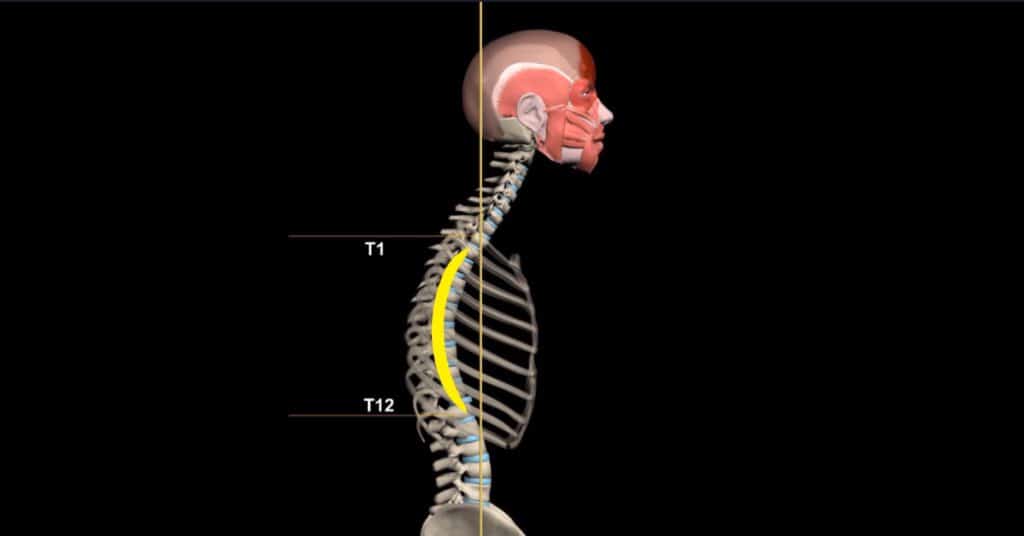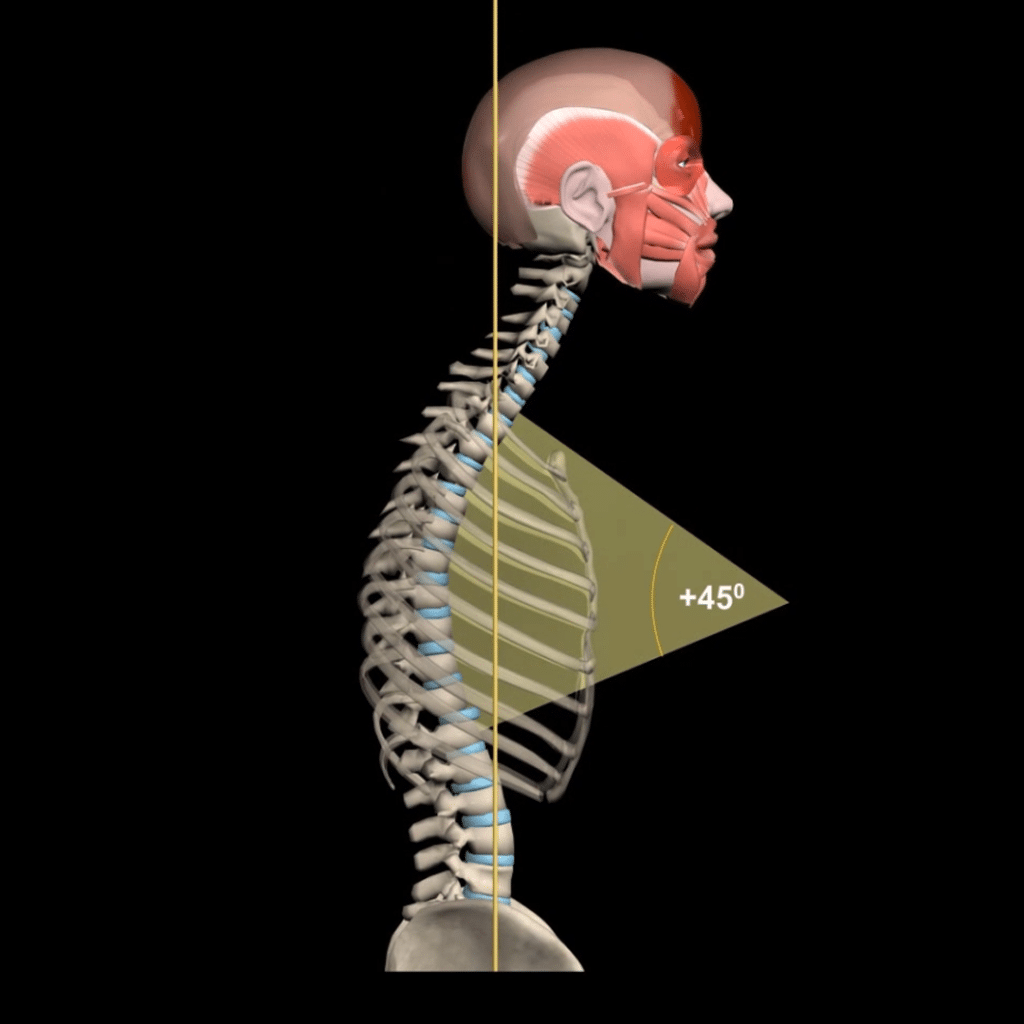In this detailed muscle and motion article, you will understand kyphosis comprehensively and explore practical ways to diagnose and treat this condition conservatively.
What is kyphosis?
Kyphotic position refers to a condition with excessive curvature in the thoracic vertebrae that may lead to a rounded back and other associated postural changes. Kyphosis is also likely to create increased curvatures in the cervical and lumbar areas of the spine as a result of compensatory processes by the body. The therapeutic approach and potential for improvement depend on a systematic diagnostic procedure that considers the severity of the deformity and identifies whether it is structural or functional in nature.
What causes kyphosis?
Depending on the type, Kyphosis can be caused by various factors:
- Postural: Poor posture, such as frequently leaning back in chairs or carrying heavy bags.
- Structural: Structural issues in the spine such as Scheuermann’s disease
- Congenital: Abnormal spine development that occurs before birth.
Furthermore, kyphosis can arise from two additional causes:
- Aging: As individuals age, there is a natural tendency for the spine to develop a more pronounced curvature.
- Spinal injury: Trauma or damage to the spine can contribute to the development of kyphosis.
How to diagnose kyphosis
In a normal situation, the spine exhibits a range of normal curves. Typically, there is a slight to moderate kyphosis, which is a natural curvature observed in the thoracic vertebrae (T1-12). Kyphosis may first be detected during a general postural screening at school or by adolescents or their parents noticing a spine rounding.
During a physical examination, a healthcare provider will assess the spine. This may include the “Adam’s forward bend test,” where you are asked to bend forward with feet together, knees straight, and arms hanging freely. This test helps the clinician identify spinal curves or any other spine-related issues, such as scoliosis (a sideways curvature of the spine). In such cases, seeking a complete diagnosis from a healthcare provider is advisable. Check out this video to see how kyphosis would look in this test.
To accurately measure the spinal curve, a spine X-ray may be performed. The normal range for spinal kyphosis falls between 30 and 40 degrees. In cases of hyperkyphosis, excessive convexity measures 45 degrees or more.
Common characteristics of kyphosis:
- Rounded back with an exaggerated thoracic curve.
- Forward-slouched shoulders and protracted scapulae.
- Forward head posture.
- Thoracic rigidity or stiffness, particularly in extension and rotation.
- Difficulty in straightening and extending the thoracic vertebrae.
- Compensatory actions including shoulder raising, anterior pelvic tilt, and chin elevation.
- Scapular protraction due to shortening of the pectoralis minor muscle.
- Anterior arm tilt, primarily caused by shortening of the pectoralis major muscle.
- Structural kyphosis is more prominent when lying down.
- Rigid kyphosis is also noticeable during spinal rotation in the horizontal plane.
- Shortened chest muscles, namely the pectoralis major and pectoralis minor.
- Weakness in the deep erector spinae muscles and scapular retractors.
- Greater curves may develop in the cervical and lumbar vertebrae due to compensatory processes.
- Shortened cervical extensors and sternocleidomastoid muscles (SCM).
- Limited chest cavity mobility leads to shallow breathing.
- Shortened hamstrings.
- Reduced body awareness.
Treatment of Kyphosis
The therapeutic approach and determination of the potential for improvement rely on a systematic diagnostic procedure that evaluates the severity of the deformity and identifies its underlying cause, whether structural or functional.
When addressing functional kyphosis, treatment should encompass two main components: targeted mobilization of the thoracic vertebrae, either actively or passively depending on the nature of the deformity and primarily involving the extension of the vertebrae in the sagittal plane, and strengthening of the erector spinae muscles in the sagittal plane.
To deepen your understanding of kyphosis and optimize your treatment for this condition, we highly recommend downloading our Posture APP.
Our Posture APP will provide valuable insights and practical guidance with 3D illustrations on diagnosing and treating kyphosis and other postural disorders.
Don’t miss out on this invaluable tool to enhance your diagnostic abilities and treatment knowledge.
At Muscle and Motion, we believe that good posture is essential for your long-term health and well-being. Our Posture App can help you improve your posture and reduce pain. Sign up for free today!
Written by Uriah Turkel, Physical Therapist and Content Creator at Muscle and Motion.


